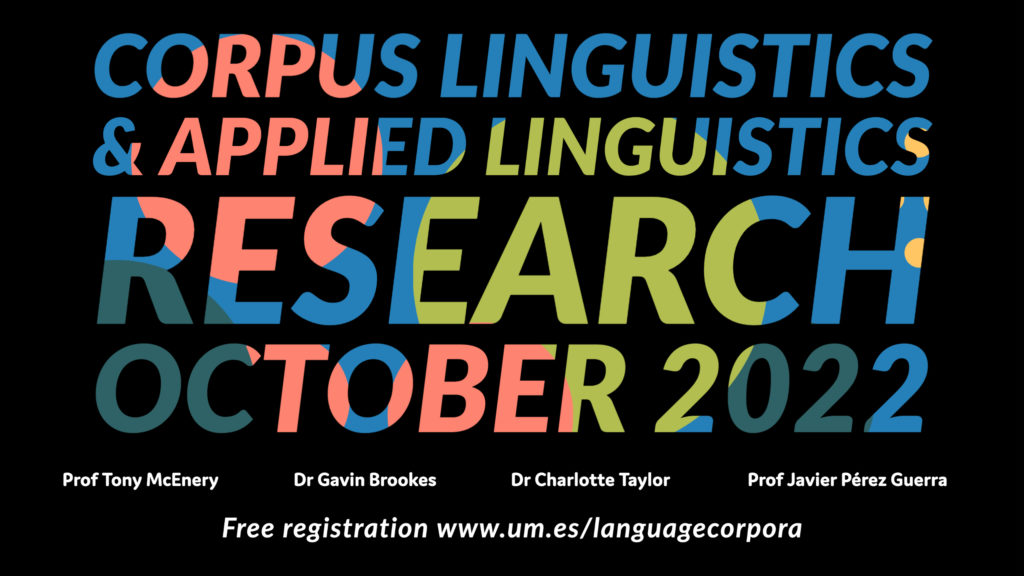With Tove Larsson and Gregory Hancock
Chech this out:
Larsson, T., Plonsky, L., & Hancock, G. R. (2021). On the benefits of structural equation modeling for corpus linguists. Corpus linguistics and linguistic theory, 17(3), 683-714.
With Tove Larsson and Gregory Hancock
Chech this out:
Larsson, T., Plonsky, L., & Hancock, G. R. (2021). On the benefits of structural equation modeling for corpus linguists. Corpus linguistics and linguistic theory, 17(3), 683-714.
The following is an extract form Hunston (2022, p. 256).
Hunston, S. (2022). Corpora in applied linguistics. Cambridge University Press.
Sinclair made a number of generalisations in the 1980s (Sinclair 1991, 2004; see also Francis 1993; Hoey 2005; Hunston 2002; Stubbs 2001) which might be summarised as follows:
• In describing the meanings of a word, the ‘phrases’ that the word is used in are central to that description (= there is no distinction between form and meaning).
• Those ‘phrases’ are neither fully fixed nor fully open – in fact the distinction between ‘word’ and ‘fixed phrase’ does not hold up; the boundaries of a ‘phrase’ may be indeterminate and the variation resists classification.
• Those ‘phrases’ incorporate associations between individual words that might be discussed under the heading of collocation, but the ‘phrases’ also include aspects of grammar and commonalities of meaning rather than of form (= language is not divided into lexis and grammar).
• Although we commonly think of words as having meaning, and we often talk of a word having several meanings, what actually happens is that a word occurs in several ‘phrases’ and meaning resides in the ‘phrase’ rather than the word (= unit of meaning).
• When we look at text we can observe that a lot of it can be explained as a series of units of meaning and the remainder can be explained in terms of residual grammar (= idiom principle and open-choice principle).

Prof Tony McEnery, University of Lancaster
October 5, 18:00 (Madrid time) / 17:00 (UK time)
Dr Gavin Brookes, University of Lancaster
October 12, 18:00 (Madrid time) / 17:00 (UK time)
Dr Charlotte Taylor, University of Sussex
October 19, 18:00 (Madrid time) / 17:00 (UK time)
Prof Javier Pérez Guerra, Universidad de Vigo
October 26, 18:00 (Madrid time) / 17:00 (UK time)

After the registration, you’ll receive an email with the webinar link for the four talks. This is the same link for all four talks.
You can check out the 2021 talks here:
https://www.youtube.com/channel/UCKjKIIQL6u1mXD2V9ZaT-_Q/featured
This online event is organized by the Universidad de Murcia and the E020-07 research group (Lenguajes de especialidad, corpus lingüísticos y lingüística inglesa aplicada a la ingeniería del conocimiento).
Coordination: Prof Pascual Pérez-Paredes
Prof Pascual Pérez-Paredes
Using #corpuslinguistics methods in education research @EducationBATH seminar series.
25 May 2022 Thanks to @SamanthaCurle @rjreka U. Bath, Uk
Curry, N. (2022). On Corpus-Based Contrastive Linguistics and Language Pedagogy: Reimagining Applications for Contemporary English Language Teaching. In: McCallum, L. (eds) English Language Teaching. English Language Teaching: Theory, Research and Pedagogy. Springer, Singapore. https://doi.org/10.1007/978-981-19-2152-0_14
Li, L. X. (2022). Meta-Analytical Approach to the Impact of Corpus-Driven Teaching on Foreign Language Acquisition. Mobile Information Systems, 2022. https://doi.org/10.1155/2022/5049312
Ng, C.H., Cheung, Y.L. (2022). Teaching and Learning English in the European Union: A Research Review. In: McCallum, L. (eds) English Language Teaching. English Language Teaching: Theory, Research and Pedagogy. Springer, Singapore. https://doi.org/10.1007/978-981-19-2152-0_2
Nishigaki, C., Akasegawa, S., & Oghigian, K.(2022). Development of an Online DDL Tool for Secondary School Learners. 千葉大学教育学部研究紀要, 70, 289-297. https://opac.ll.chiba-u.jp/da/curator/900120471/S13482084-70-P289.pdf
Tafazoli, D. (2022). English Language Teachers’ Attitudes Towards Computer-Assisted Language Learning: SWOT Analysis in Spain. In: McCallum, L. (eds) English Language Teaching. English Language Teaching: Theory, Research and Pedagogy. Springer, Singapore. https://doi.org/10.1007/978-981-19-2152-0_16
Yasaman Iravi & Ali Malmir (2022) The effect of lexical tools and applications on L2 vocabulary learning: a case of English academic core words, Innovation in Language Learning and Teaching, DOI: 10.1080/17501229.2022.2102638